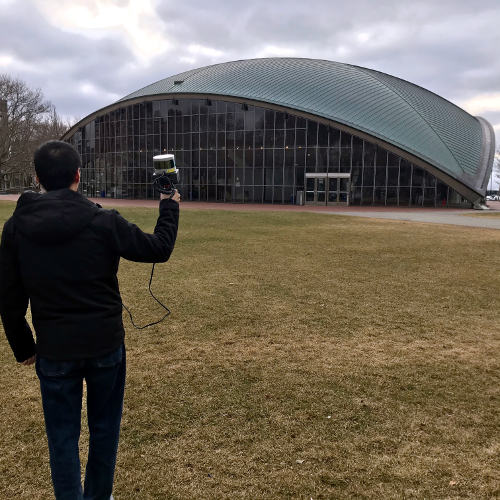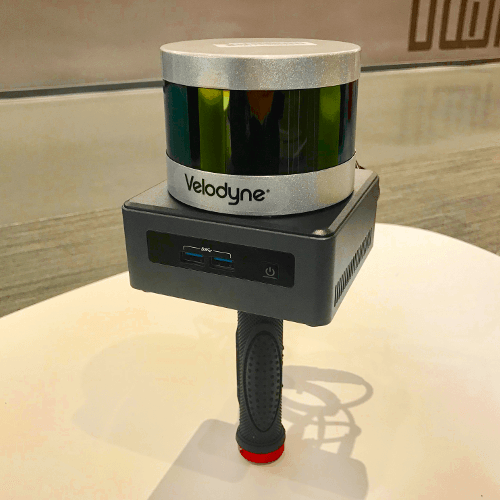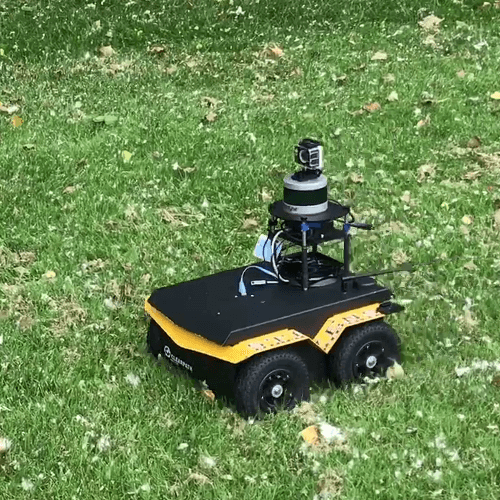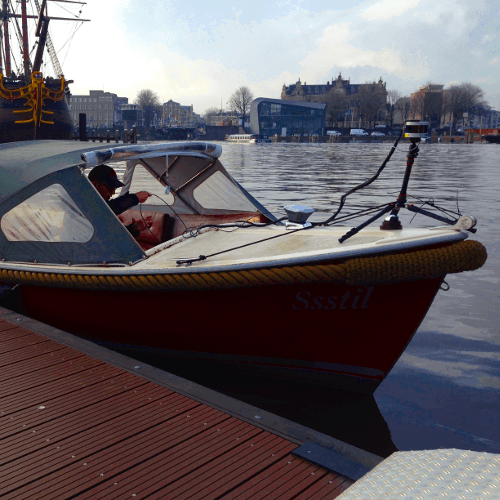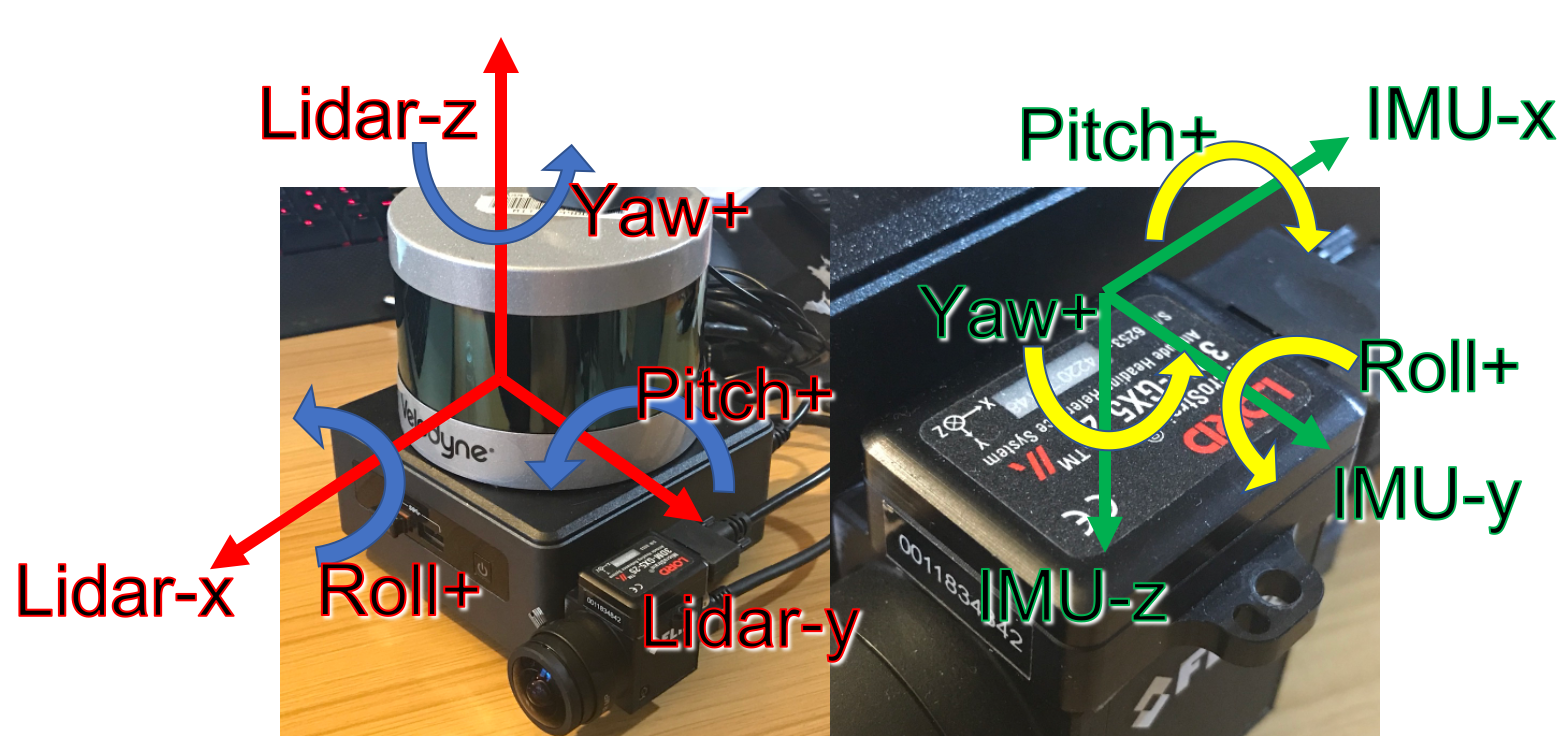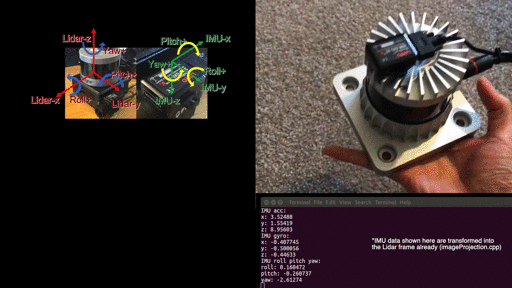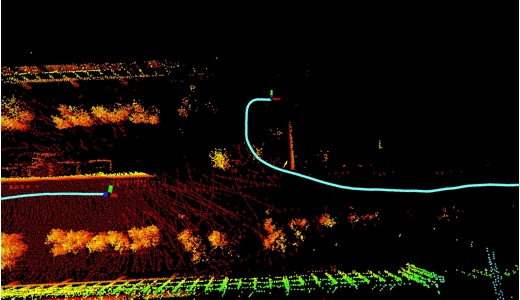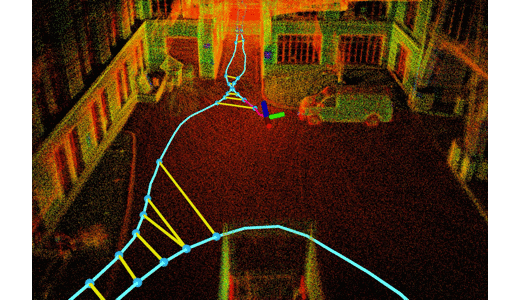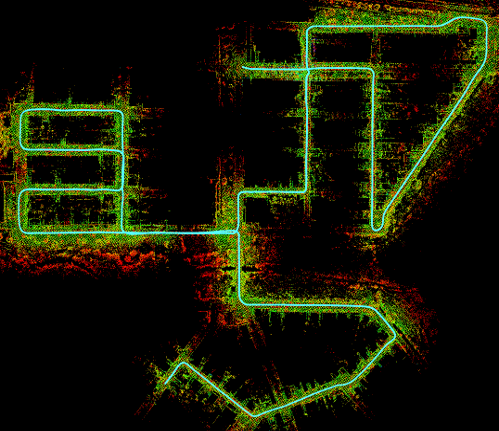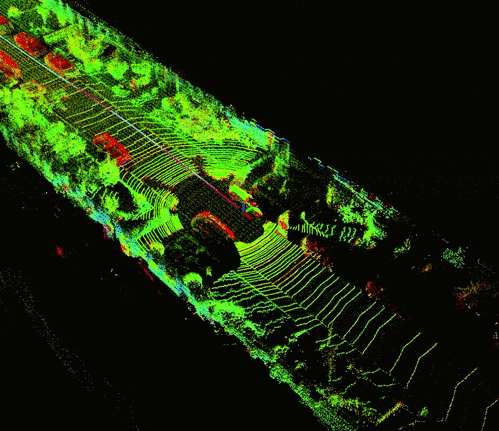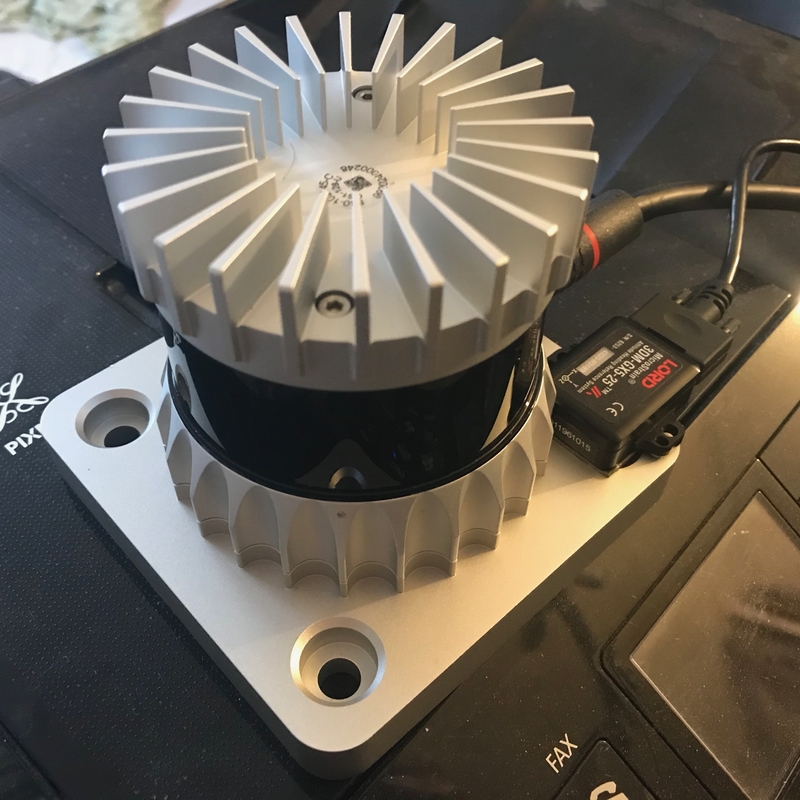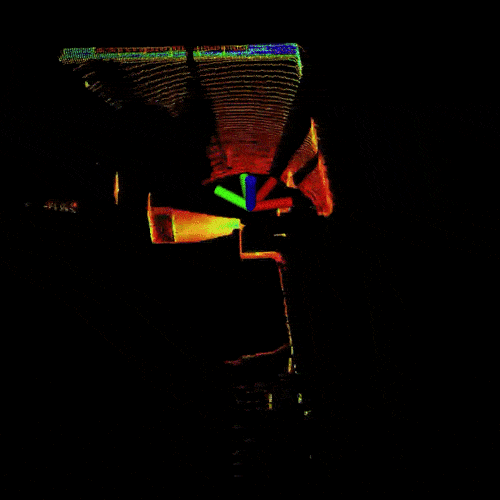A real-time lidar-inertial odometry package. We strongly recommend the users read this document thoroughly and test the package with the provided dataset first. A video of the demonstration of the method can be found on YouTube.
-
Prepare lidar data (must read)
-
Prepare IMU data (must read)
We design a system that maintains two graphs and runs up to 10x faster than real-time.
- The factor graph in "mapOptimization.cpp" optimizes lidar odometry factor and GPS factor. This factor graph is maintained consistently throughout the whole test.
- The factor graph in "imuPreintegration.cpp" optimizes IMU and lidar odometry factor and estimates IMU bias. This factor graph is reset periodically and guarantees real-time odometry estimation at IMU frequency.
There are some features of the original ROS1 version that are currently missing in this ROS2 version, namely:
- Testing with Velodyne & Livox lidars and Microstrain IMUs
- A launch file for the navsat module/GPS factor
- The rviz2 configuration misses many elements
This branch was tested with Ouster lidars, Xsens IMUs and SBG-Systems IMUs using the following ROS2 drivers:
In these tests, the IMU was mounted on the bottom of the lidar such that their x-axes pointed in the same direction. The parameters extrinsicRot and extrinsicRPY in params.yaml correspond to this constellation.
Tested with ROS2 versions foxy and galactic on Ubuntu 20.04 and humble on Ubuntu 22.04
- ROS2
sudo apt install ros-<ros2-version>-perception-pcl \ ros-<ros2-version>-pcl-msgs \ ros-<ros2-version>-vision-opencv \ ros-<ros2-version>-xacro - gtsam (Georgia Tech Smoothing and Mapping library)
# Add GTSAM-PPA sudo add-apt-repository ppa:borglab/gtsam-release-4.1 sudo apt install libgtsam-dev libgtsam-unstable-dev
Use the following commands to download and compile the package.
cd ~/ros2_ws/src
git clone https://github.com/TixiaoShan/LIO-SAM.git
cd lio-sam
git checkout ros2
cd ..
colcon build
The user needs to prepare the point cloud data in the correct format for cloud deskewing, which is mainly done in "imageProjection.cpp". The two requirements are:
- Provide point time stamp. LIO-SAM uses IMU data to perform point cloud deskew. Thus, the relative point time in a scan needs to be known. The up-to-date Velodyne ROS driver should output this information directly. Here, we assume the point time channel is called "time." The definition of the point type is located at the top of the "imageProjection.cpp." "deskewPoint()" function utilizes this relative time to obtain the transformation of this point relative to the beginning of the scan. When the lidar rotates at 10Hz, the timestamp of a point should vary between 0 and 0.1 seconds. If you are using other lidar sensors, you may need to change the name of this time channel and make sure that it is the relative time in a scan.
- Provide point ring number. LIO-SAM uses this information to organize the point correctly in a matrix. The ring number indicates which channel of the sensor that this point belongs to. The definition of the point type is located at the top of "imageProjection.cpp." The up-to-date Velodyne ROS driver should output this information directly. Again, if you are using other lidar sensors, you may need to rename this information. Note that only mechanical lidars are supported by the package currently.
-
IMU requirement. Like the original LOAM implementation, LIO-SAM only works with a 9-axis IMU, which gives roll, pitch, and yaw estimation. The roll and pitch estimation is mainly used to initialize the system at the correct attitude. The yaw estimation initializes the system at the right heading when using GPS data. Theoretically, an initialization procedure like VINS-Mono will enable LIO-SAM to work with a 6-axis IMU. The performance of the system largely depends on the quality of the IMU measurements. The higher the IMU data rate, the better the system accuracy. We use Microstrain 3DM-GX5-25, which outputs data at 500Hz. We recommend using an IMU that gives at least a 200Hz output rate. Note that the internal IMU of Ouster lidar is an 6-axis IMU.
-
IMU alignment. LIO-SAM transforms IMU raw data from the IMU frame to the Lidar frame, which follows the ROS REP-105 convention (x - forward, y - left, z - upward). To make the system function properly, the correct extrinsic transformation needs to be provided in "params.yaml" file. The reason why there are two extrinsics is that my IMU (Microstrain 3DM-GX5-25) acceleration and attitude have different coordinates. Depending on your IMU manufacturer, the two extrinsics for your IMU may or may not be the same.
- "extrinsicRot" in "params.yaml" is a rotation matrix that transforms IMU gyro and acceleometer measurements to lidar frame.
- "extrinsicRPY" in "params.yaml" is a rotation matrix that transforms IMU orientation to lidar frame.
-
IMU debug. It's strongly recommended that the user uncomment the debug lines in "imuHandler()" of "imageProjection.cpp" and test the output of the transformed IMU data. The user can rotate the sensor suite to check whether the readings correspond to the sensor's movement. A YouTube video that shows the corrected IMU data can be found here (link to YouTube).
For privacy reasons, no data set can currently be made available for ROS2.
README.md of the master branch contains some links to ROS1 rosbags. It is possible to use ros1_bridge with these rosbags, but verify timing behavior (message frequency in ROS2) first. Mind DDS tuning.
- Run the launch file:
ros2 launch lio_sam run.launch.py
- Play existing bag files:
ros2 bag play your-bag.bag
ros2 service call /lio_sam/save_map lio_sam/srv/SaveMap
ros2 service call /lio_sam/save_map lio_sam/srv/SaveMap "{resolution: 0.2, destination: /Downloads/service_LOAM}"
- Loop closure: The loop function here gives an example of proof of concept. It is directly adapted from LeGO-LOAM loop closure. For more advanced loop closure implementation, please refer to ScanContext. Set the "loopClosureEnableFlag" in "params.yaml" to "true" to test the loop closure function. In Rviz, uncheck "Map (cloud)" and check "Map (global)". This is because the visualized map - "Map (cloud)" - is simply a stack of point clouds in Rviz. Their postion will not be updated after pose correction. The loop closure function here is simply adapted from LeGO-LOAM, which is an ICP-based method. Because ICP runs pretty slow, it is suggested that the playback speed is set to be "-r 1". You can try the Garden dataset for testing.
- Using GPS: The park dataset is provided for testing LIO-SAM with GPS data. This dataset is gathered by Yewei Huang. To enable the GPS function, change "gpsTopic" in "params.yaml" to "odometry/gps". In Rviz, uncheck "Map (cloud)" and check "Map (global)". Also check "Odom GPS", which visualizes the GPS odometry. "gpsCovThreshold" can be adjusted to filter bad GPS readings. "poseCovThreshold" can be used to adjust the frequency of adding GPS factor to the graph. For example, you will notice the trajectory is constantly corrected by GPS whey you set "poseCovThreshold" to 1.0. Because of the heavy iSAM optimization, it's recommended that the playback speed is "-r 1".
- KITTI: Since LIO-SAM needs a high-frequency IMU for function properly, we need to use KITTI raw data for testing. One problem remains unsolved is that the intrinsics of the IMU are unknown, which has a big impact on the accuracy of LIO-SAM. Download the provided sample data and make the following changes in "params.yaml":
- extrinsicTrans: [-8.086759e-01, 3.195559e-01, -7.997231e-01]
- extrinsicRot: [9.999976e-01, 7.553071e-04, -2.035826e-03, -7.854027e-04, 9.998898e-01, -1.482298e-02, 2.024406e-03, 1.482454e-02, 9.998881e-01]
- extrinsicRPY: [9.999976e-01, 7.553071e-04, -2.035826e-03, -7.854027e-04, 9.998898e-01, -1.482298e-02, 2.024406e-03, 1.482454e-02, 9.998881e-01]
- N_SCAN: 64
- downsampleRate: 2 or 4
- loopClosureEnableFlag: true or false
- Ouster lidar: To make LIO-SAM work with Ouster lidar, some preparations needs to be done on hardware and software level.
- Hardware:
- Use an external IMU. LIO-SAM does not work with the internal 6-axis IMU of Ouster lidar. You need to attach a 9-axis IMU to the lidar and perform data-gathering.
- Configure the driver. Change "timestamp_mode" in your Ouster launch file to "TIME_FROM_PTP_1588" so you can have ROS format timestamp for the point clouds.
- Config:
- Change "sensor" in "params.yaml" to "ouster".
- Change "N_SCAN" and "Horizon_SCAN" in "params.yaml" according to your lidar, i.e., N_SCAN=128, Horizon_SCAN=1024.
- Gen 1 and Gen 2 Ouster: It seems that the point coordinate definition might be different in different generations. Please refer to Issue #94 for debugging.
- Hardware:
-
Zigzag or jerking behavior: if your lidar and IMU data formats are consistent with the requirement of LIO-SAM, this problem is likely caused by un-synced timestamp of lidar and IMU data.
-
Jumpping up and down: if you start testing your bag file and the base_link starts to jump up and down immediately, it is likely your IMU extrinsics are wrong. For example, the gravity acceleration has negative value.
-
mapOptimization crash: it is usually caused by GTSAM. Please install the GTSAM specified in the README.md. More similar issues can be found here.
-
gps odometry unavailable: it is generally caused due to unavailable transform between message frame_ids and robot frame_id (for example: transform should be available from "imu_frame_id" and "gps_frame_id" to "base_link" frame. Please read the Robot Localization documentation found here.
Thank you for citing LIO-SAM (IROS-2020) if you use any of this code.
@inproceedings{liosam2020shan,
title={LIO-SAM: Tightly-coupled Lidar Inertial Odometry via Smoothing and Mapping},
author={Shan, Tixiao and Englot, Brendan and Meyers, Drew and Wang, Wei and Ratti, Carlo and Rus Daniela},
booktitle={IEEE/RSJ International Conference on Intelligent Robots and Systems (IROS)},
pages={5135-5142},
year={2020},
organization={IEEE}
}
Part of the code is adapted from LeGO-LOAM.
@inproceedings{legoloam2018shan,
title={LeGO-LOAM: Lightweight and Ground-Optimized Lidar Odometry and Mapping on Variable Terrain},
author={Shan, Tixiao and Englot, Brendan},
booktitle={IEEE/RSJ International Conference on Intelligent Robots and Systems (IROS)},
pages={4758-4765},
year={2018},
organization={IEEE}
}
- LIO-SAM is based on LOAM (J. Zhang and S. Singh. LOAM: Lidar Odometry and Mapping in Real-time).

